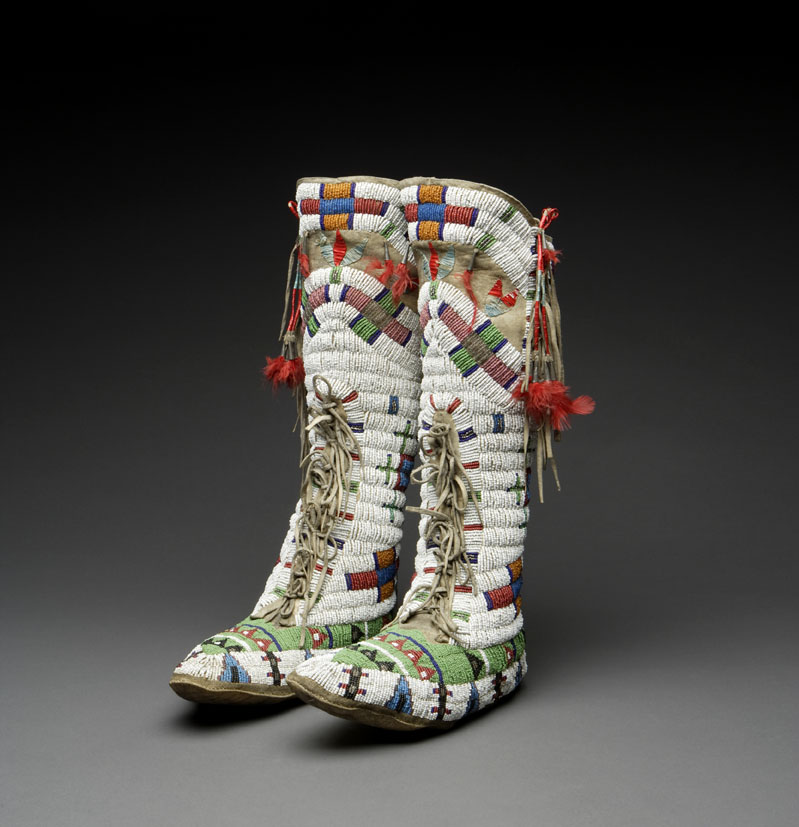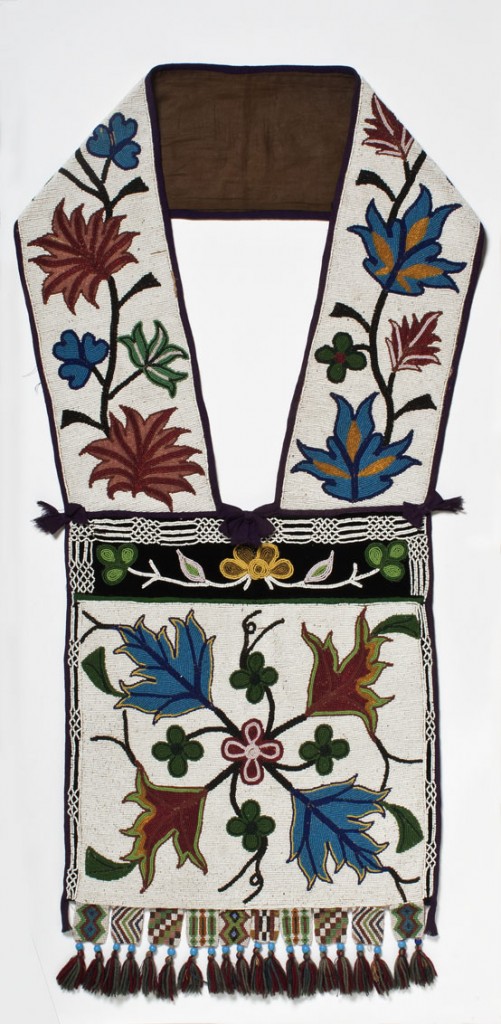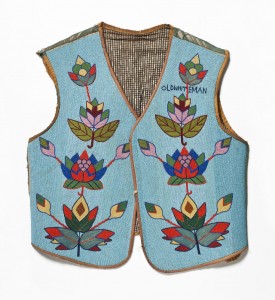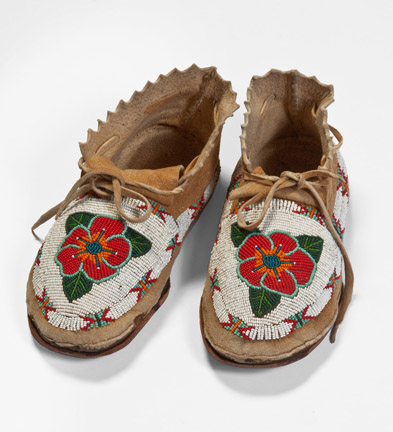Floral Journey: Native North American Beadwork
Hand-crafted is a moniker that is once again gaining popularity, both as a marketing tool and an activity of worth across the country. We had this in mind during a tour through the Autry’s beadwork show, Floral Journey: Native North American Beadwork, on view through April 2015.
Our kids had a serious obsession with beading for a few extended years, and we can remember the excitement of purchasing multitudes of colorful beads and designing items to create. What was amazing to us was how many hours of focused time could be spent by a group of (mostly) girls stringing the tiny beads into beautiful objects. Remembering how many hours were required for a few simple bracelets made it easy to appreciate the tremendous effort and skill needed to create this accessory, called a Bandolier Bag.
Ojibwe bandolier bag, 1880s–1890s. Cloth, velvet, yarn, glass beads. Gift of Mr. H. V. Smith. Southwest Museum of the American Indian Collection, Autry National Center
The work at the Autry is absolutely stunning and with over 250 items from the 19th and 20th centuries, there is something for everyone to love. While the focus of the show is scholarly, a spiritual message comes across from a tour of the spectacular objects. Floral designs became popular in the work of Native Americans, because of fashion trends hailing from European fabric design — these were apparently imparted by schoolteachers in the 1800s who worked on the reservations. Hence, the real focus of the show is to demonstrate how the artists blended their spiritual cosmology into their work, incorporating symbols for native beliefs into the floral and decorative designs. Identifying these two elements side by side is the neat trick of the exhibit, and often contemporary designs are shown side by side with antique pieces.
Crow vest, 1915–1920. Maker: Has Things. Cloth, glass beads. Purchased by the Southwest Museum Acquisition Fund. Southwest Museum of the American Indian Collection
Take the time to watch the videos of native artists working in beads today, and you will hear them discuss how they’ve kept a heritage alive through these crafts. Since beading and design work was primarily done by women, and since the grandmas and young kids were the first to be dislocated in the Trail of Tears, history was literally lost. Artists struggle to keep these traditions alive today through their beading, and this show is able to bring together extraordinary objects to offer another chapter in the sad chronology of lost Native American heritage.
Several of the artists in the videos discuss how it’s “hard to be still” – the beadwork helps them practice focus and stillness. If you needed a reason to spend time and money on crafting projects of any kind in your kids, any chance to help kids focus over a long period of time is valuable.
We found a set of what are essentially men’s purses — for tobacco and snuff — called Octopus bags particularly appealing. Beaded outfits were as much for men as women, and used functionally – of course, we think of moccasins and boots.
Arapaho/Shoshone moccasins, 1947. Leather, glass beads. Gift from the Collection of D. L. and Shirley K. Hall. Southwest Museum of the American Indian Collection, Autry National Center
Lakota boots, 1880s–1890s. Hide, feathers, metal cones, glass beads. Loan courtesy of the James R. Parks Collection




